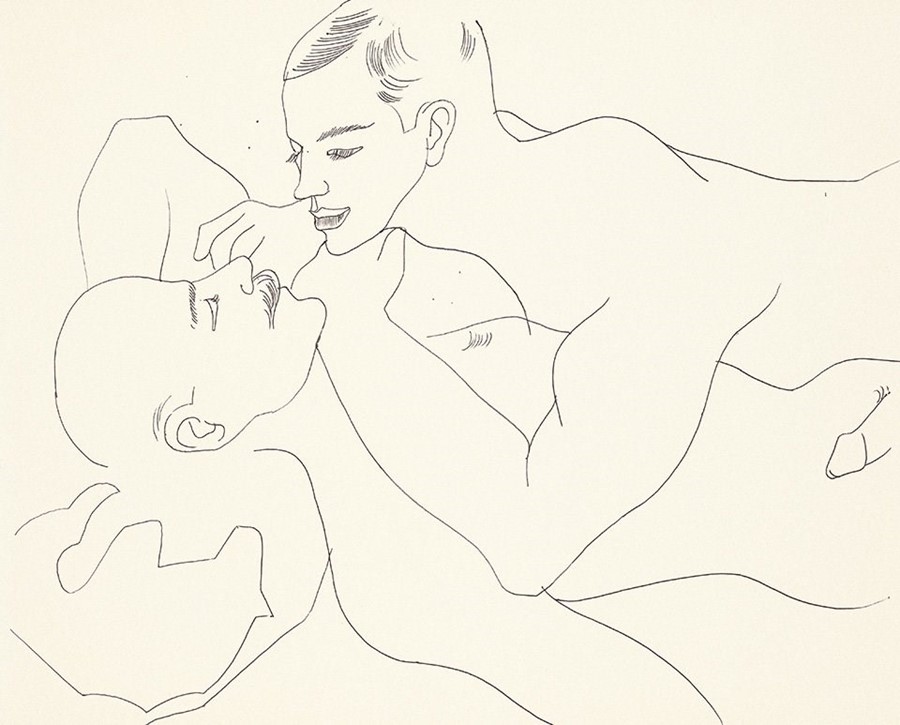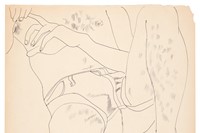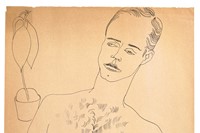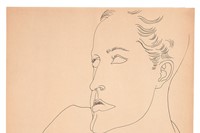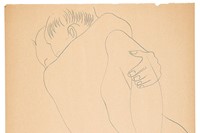The new book Andy Warhol. Love, Sex, and Desire. Drawings 1950–1962 brings together over 300 drawings of men reveling in the pleasure of youth, beauty, and the flesh
During the summer of 1952, a rising commercial illustrator named Andy Warhol was preparing to make his debut on the New York art scene. He had been working on a series of elegant line drawings celebrating queer love – a style and subject that couldn’t be less fitting to the American audience. Enthralled by hypermasculine ideals and Abstract Expressionist aesthetics, galleries balked at Warhol’s efforts to show his work but the then 24-year-old artist would not be denied.
“Throughout his life, Warhol refused to be defined by social conventions,” says Michael Dayton Hermann, editor of Andy Warhol. Love, Sex, and Desire. Drawings 1950–1962 (Taschen, November 2020). “John Giorno, artist, poet and Warhol’s former lover, explained, ‘Andy was a gay man and worked with the homoerotic. In the homophobic 1950s, this was daring and heroic. A great risk.’”
The book brings together over 300 drawings rendered primarily in ink on paper of men reveling in the pleasure of youth, beauty, and the flesh. Their defining characteristic is a palpable sense of unbridled sexuality, one made all the more alluring by its defiance against societal norms. At a time when homosexuality was illegal and full-frontal male nudity was considered “obscene,” simply looking at the male body was an act of liberation, defiance, and pure delight.
In the essay Warhol’s Defiant Hopes for Queer Art, art critic Blake Gopnik recounts, “Endless stories have come down to us about the overheated drawing sessions that provided Warhol’s subject matter. ‘Andy had this great passion for drawing people’s cocks and he had pads and pads and pads of drawings of people’s lower regions,’ said a queer friend and assistant of Warhol’s … ‘Every time he got to know somebody, even as a friend sometimes, he’d say, ‘Let me draw your cock.’ … They’d drop their pants, and Andy would make a drawing. That was it. And then he’d say, ‘Thank you.’”
Warhol knew exactly what he wanted and his drawings said it all. “Warhol’s drawings of men depict a spectrum of intimacy from a yearning gaze to a loving embrace to fellatio,” Hermann says. “That these works were created by a practicing Catholic in the United States at a time when sodomy was a harshly punished felony in every state illustrates that, even at a young age, Warhol embraced the role of the nonconformist.”
Interestingly, Warhol decided to first shows these works on Valentine’s Day in 1956, presenting them at the Bodley Gallery on New York’s Upper East Side. “Warhol wasn’t looking to ingratiate himself into powerful social circles by publicly countering ideas of sexuality acceptable at that time,” Hermann says.
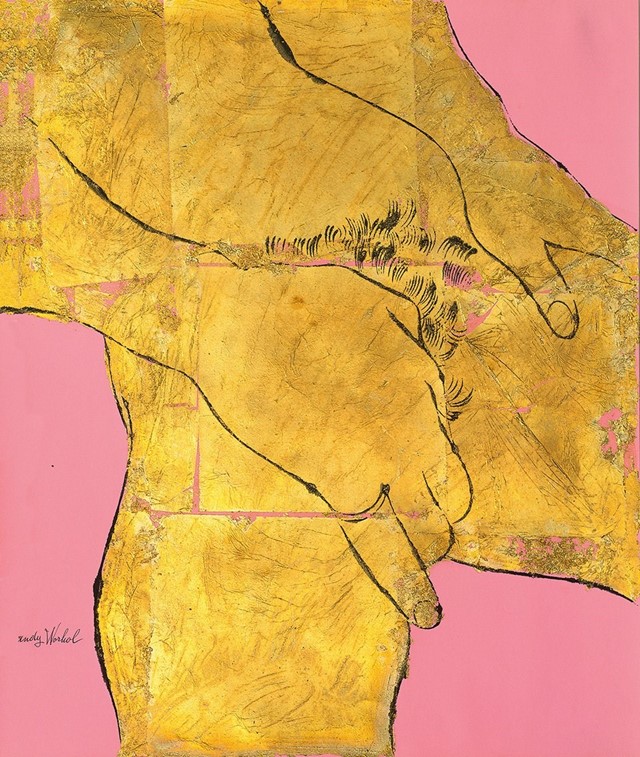
“Instead, Warhol seemed intent on expanding the circumference of those elite groups to be more inclusive of marginalised people like himself. As Warhol said about his storied studio, the Factory, which brought people together regardless of their social status or sexuality, ‘People weren’t particularly interested in seeing me, they were interested in seeing each other.’”
Although Warhol kept his romantic relationships relatively private, he used art to express his queer identity throughout his career. In doing so, these drawings may reveal more than his self-portraits ever did.
“The early drawings featured in Andy Warhol Love, Sex, and Desire uniquely showcase Warhol’s own hand and reveal an artist who subsequently crafted an impenetrable public image for himself,” Hermann says. “Collectively, the hundreds of drawings Warhol made from life during this period provide a touching portrait of the one person not depicted in any of them – Andy Warhol.”
Andy Warhol. Love, Sex, and Desire. Drawings 1950–1962 by Michael Dayton Hermann, Drew Zeiba and Blake Gopnik is published by Taschen.
